The fighting game genre has had a long and storied life. For every Hadoken and TOASTY, there’s a game that doesn’t pack the same punch. With the resurrection of the genre now in full swing, it’s only fitting that we take a step back and appreciate the trail blazed by this giant genre in gaming.
The long road ahead has been divided into four parts: The Foundation, The Golden Years, The Decline, and the Resurgence. Whether you like fighting games or not, you’ll be amazed at just how far fighters have come.
FIGHT!
ROUND 1: THE FOUNDATION (1985-1987)
Yie Ar Kung Fu (1985): Way back in the mid-80s (before I was born, for what it’s worth), Konami developed an arcade game that pitted one hero, Oolong, against a gauntlet of eleven formidable fighters in a ladder format. That game was Yie Ar Kung Fu, and it was the first 2D fighting game ever. Oolong’s opponents fit many of the prototypes we see today: a sumo wrestler (Buchu), a Bruce Lee-esque martial artist with nunchuks (Nuncha), a female warrior who throws steel fans (Fan), and more. Attacks would be performed by moving the joystick in a certain direction and pressing either punch or kick. Once the opponent’s life was drained, he or she was defeated and Oolong can move on. Any gamer can read that description and pick out the fighting game standards still used today. Yie Ar Kung Fu had quite a following in the arcades, and it inspired another game developer, Capcom, to make a similar game two years later.
Street Fighter (1987): It could be called “Fighting Street” depending on where you play it, but the original Street Fighter took the formula of Yie Ar Kung Fu and built on it big time. Street Fighter started the industry-standard six-button layout with three punches and three kicks of varying speed and strength, and the first input-command special attacks (quarter-circle forward and a punch, for instance). The one-player “story” mode would have Ryu travel around the world to fight. Players would choose between China, England, Japan, and the USA before heading to Thailand for the final battle. Familiar faces like Ryu, Ken, Sagat, Adon, Eagle, and Birdie were all here, but little did we know just how familiar they would become. Not only did Street Fighter lay down the groundwork for one of the most successful franchises in gaming, but it also served as a major precedent for gaming’s next quarter-century. Without it, who knows where we’d be?
With The Foundation in place, the era of the fighting game could begin. On to Round 2!
ROUND 2: THE GOLDEN YEARS (1991-2001)
These are the years where fighting games really establish themselves as a game genre. Starting in 1991, fighters become synonymous with gaming culture, especially in the arcades…
1991: Four years in the making, Capcom’s Street Fighter II hits in March and the fighting genre takes off. Balanced characters and tight gameplay solidified SF2’s place in history. Arcades all over the world are filled with the sights and sounds of Ryu, Ken, Guile, Chun-Li and more. That November, SNK releases Fatal Fury, the first real contender to Street Fighter’s throne. Only three playable characters here, but the foreground/background split and the 4-button Neo Geo scheme give players something different that what Street Fighter II offered. Fighting game domination has begun.
1992: SNK releases two more fighting franchises to compete with the Street Fighter II juggernaut: Art of Fighting and World Heroes. Art of Fighting presents only two selectable fighters but introduces “super” moves (enhanced special moves that can only be performed under certain conditions), while World Heroes features historically-based characters and brand-new Death Matches, fights with damaging obstacles strewn about the stage. Meanwhile, Mortal Kombat, the first Western attempt at fighting, employs gratuitous gore to earn a tremendous fan base. Players weren’t used to seeing their fighter’s head ripped from his shoulders after a loss, and the shock value alone made MK a hit. Understandably, MK also marks the beginning of the campaign against violent video games. ’92 is also the first year when sequels start to really pop up, with SNK releasing Fatal Fury 2 and Capcom launching two SFII follow-ups: Champion Edition and Turbo.
1993: Mortal Kombat II, a more violent follow-up, hits arcades like a freight train. While MK was a fresh take, MK2 fuels the Capcom vs Midway rivalry on a whole new level. Data East jumps into the ring with Fighter’s History, which warrants a failed lawsuit attempt from Capcom for infringement on the SFII copyright. Capcom, despite its legal misstep, doesn’t miss a beat and launches Super Street Fighter 2 with four brand new characters. SNK releases a follow-up to World Heroes, but also adds another franchise to its repertoire: Samurai Shodown, a feudal-Japan era game which is the first to implement full-on weapons-based combat. Interplay takes a cheeky approach to fighting with Clay Fighter, a light-hearted parody with a ridiculous story and even more absurd fighters. Sega also joins the party, but they decide to try something new and release Virtua Fighter, the first fighting game to feature full 3D arenas and polygonal characters. The game also adds a new tactical wrinkle in Ring Outs, where a player could lose a round by stepping out of the boundaries of the ring. The new look takes off, giving birth to the 3D fighting game.
1994: Capcom expands Street Fighter yet again with Super Street Fighter 2 Turbo, then finally expands their fighting library by launching Darkstalkers and X-Men: Children of the Atom. Both games are a new take on 2D fighting, from Darkstalkers‘ supernatural setting to X-Men‘s super jumps and flashy Super Combos. SNK keeps the sequel trend alive with Art of Fighting 2, Samurai Shodown 2, and World Heroes 2 Jet, but also decides to up the ante, combining some of its fighting franchises to create The King of Fighters ’94. Characters from Fatal Fury, Art of Fighting, and more came together to fight 3-on-3 for the first time. Killer Instinct from Rare makes its first appearance, sporting flashy graphics and one of the best announcers in a fighting game (C-C-C-C-C-C-COMBO BREAKER!). Atari (yes, that Atari) takes the genre back to the Stone Age with Primal Rage, allowing players to fight with dinosaurs and giant apes. On the 3D front, Sega releases Virtua Fighter 2, adding two characters and improving the battle system, while Namco enters the 3D realm with Tekken, whose fast, unrelenting combat lays the foundation for a highly successful fighting franchise.
1995: A sequel-dominated year sees a total of nine established franchises get new entries: Capcom’s Night Warriors (Darkstalkers 2) and Marvel Super Heroes (X-Men: CotA 2, technically), SNK’s Fatal Fury 3 and Real Bout Fatal Fury, Midway’s Mortal Kombat 3 and Ultimate Mortal Kombat 3, Rare’s Killer Instinct 2, Interplay’s Clay Fighter 2: Judgment Clay, and Namco’s Tekken 2. Each one adds characters, stages, and tweaks to the overall package, but it is Tekken 2, Marvel Super Heroes, and Mortal Kombat 3 that see the best reception. Capcom is also busy expanding its biggest name, adding Street Fighter Alpha and Street Fighter: The Movie. While Alpha becomes another flagship title, SF: The Movie is subpar at best, and downright ugly at worst. Amidst the tidal wave of sequel are some new titles, however, as Sega’s Fighting Vipers and Takara’s Battle Arena Toshinden give 3D fighting fans a pair of strong alternatives.
1996: Tecmo surprises everyone with Dead or Alive, featuring fast-paced 3D fighting and, more importantly, lots of T and A. Takara gives Battle Arena Toshinden a sequel, but Namco unleashes a 3D weapons-based fighter of its own in Soul Edge. Sega releases Virtua Fighter 3 and Fighters Megamix, putting characters from multiple Sega franchises against each other (even the car from Daytona USA was selectable). Midway has an underwhelming showing with two mediocre 3D fighters: Mace the Dark Age and War Gods. SNK is quiet yet efficient, only producing the excellent King of Fighters ’96. Capcom, however, is the busiest of the year, not only putting out a new title in Red Earth, but also keeping Street Fighter alive with three vastly different games. Hardcore fans are given Street Fighter Alpha 2, 3D fighting fans receive their first 3D SF entry in Street Fighter EX, and in a shocking twist, Capcom combines the SF and X-Men franchises to form X-Men vs Street Fighter, showcasing fast-paced gameplay in a new 2-on-2 tag team format.
1997: Capcom unleashes an incredible four-hit combo: Darkstalkers 3, Rival Schools, Marvel Super Heroes vs Street Fighter, and the long-awaited Street Fighter III. SFIII comes with a brand new cast (besides Ryu and Ken) and a new parrying system, becoming an instant hit. Rival Schools, while more of a cult hit, features 2-on-2 fighting in 3D for the first time. Midway builds on the 3D engine of Mace and War Gods and produces Mortal Kombat 4, the first 3D entry in the franchise. Squaresoft wins the creativity award for the year with Bushido Blade, a samurai 3D fighter with no life bars; fights can last one slash or twenty, it’s different every time. Namco releases Tekken 3 while finally bringing their sword fighting franchise home with Soul Blade, an expanded version of Soul Edge for consoles. Interplay’s final entry to its comical franchise, Clay Fighter 63 1/3, launches with more ridiculous clay-based fighting action and brand-new Claytalities. Hudson Soft joins the 3D fighting fun with Bloody Roar, a game of half-man, half-beast warriors. Takara hits us with Battle Arena Toshinden 3, bringing with it over 30 characters, the largest roster the franchise has ever seen. SNK adds another IP to its library with Last Blade, while also producing Real Bout Fatal Fury Special and their annual King of Fighters entry. Perhaps the most interesting fighter of 1997 is LucasArts’ Star Wars: Masters of Teras Kasi, which implements Soul Blade-esque gameplay in the Star Wars universe. The game does not perform well, as fans are angered with the whole“Lightsaber Doesn’t Chop Someone in Half Instantly” idea.
1998: Sequels dominate 1998, but there are some new IPs that intrigue and impress. SNK only puts out two fighters, the expected-at-this-point King of Fighters ’98 and the Japan-only Last Blade 2. Capcom also gets a case of sequel-itis, launching Street Fighter EX 2 for the 3D crowd, and Street Fighter Alpha 3 and Marvel vs Capcom for the 2D group. Alpha 3 is a who’s who of Street Fighter lore, while MvC expands the VS series beyond Street Fighter, including IPs like Mega Man, Strider, and Captain Commando. It’s not all sequels for Capcom, though, as the team behind Street Fighter III puts out Jojo’s Bizarre Adventure, a 2D fighter based on the popular anime series. Namco releases SoulCalibur; the tight combat and balanced fighting quickly makes it one of the most popular 3D fighters ever. Arc System Works partners with Atlus to release Guilty Gear, a new IP with fast-paced fighting and a unique control scheme. Square follows up its interesting samurai franchise with Bushido Blade 2, which adds a revamped story mode and two gun-wielding characters.
1999: SNK, after years of mediocre fighters and annual King of Fighters titles (this year was no different, by the way), finally strikes oil again with Garou: Mark of the Wolves. The gameplay has an almost unmatched balance and a varied roster to boot. Capcom plays a strong hand as well, releasing two brand new IPs and a revision of a popular game. Plasma Sword and Power Stone keep the 3D fans happy, while 2D fans and Street Fighter freaks get the now-standard Street Fighter 3 experience with Third Strike. Along with the expected tweaks to the gameplay, five characters are added to the main roster, including the triumphant return of Chun-Li. Namco puts a new spin on its 3D fighting franchise with Tekken Tag Tournament. Tekken Tag borrows the 2-on-2 tag format of other fighters with some alterations, like winning a round by defeating only one of the two opponents. Nintendo, quiet in the fighting realm for all this time, releases Super Smash Brothers, a 4-player, free-for-all fighting game featuring some of Nintendo’s biggest mascots. The over-the-top gameplay and big time roster (Mario, Link, Pikachu, etc) make SSB an instant hit.
2000: The new millennium brings with it a disturbing trend: an inordinate amount of sequels. Only one game can be considered an original IP, and even then it’s a game built on pre-existing IPs. Capcom partners with one of its biggest competitors and creates Capcom vs SNK, pitting the biggest names from Capcom and SNK’s franchises against each other. Every other game this year is a new installment in an established franchise. Tecmo releases Dead or Alive 2, a strong sequel that became one of the Dreamcast’s big hits. Arc System Works and new publisher Sammy launch Guilty Gear X for the Japan enthusiasts, and Capcom pushes out four total sequels: Power Stone 2, Street Fighter EX 3, Project Justice (sequel to Rival Schools) and a little game called Marvel vs Capcom 2. Marvel vs Capcom 2 rises to worldwide stardom, Project Justice becomes one of the rarest games ever made, and the other two enjoy middling success despite being excellent follow-ups.
2001: While this is a year of all sequels and remakes, the quality of the games cannot be overstated. Capcom vs SNK 2 enhances the fighting system, supersizes the roster, and allows players to create their own custom colors. Capcom also gives portable players their Street Fighter fix with Super Street Fighter 2 Turbo Revival, fitting the entirety of the last SFII entry onto a small Game Boy Advance cartridge. Tecmo chooses to keep its fighting franchise alive on Microsoft’s new Xbox with the launch-title Dead or Alive 3, while Namco and Sega enhance their 3D fighting rivalry with Tekken 4 and Virtua Fighter 4. Perhaps the most successful, though, is Nintendo’s Super Smash Bros Melee, which jettisons the already crazy gameplay to all new levels with more characters, more stages (some of them constantly moving), and more crazy 4-on-4 action.
By 2001, fighting games had enjoyed a ten-year seat at the top of the gaming pantheon, but hard times were about to rock the genre like a Bo Rai Cho fartality…
ROUND 3: THE DECLINE (2002-2007)
The next five years prove to be the low point in fighting game history. Interest in the genre wane in the face of blockbuster series like Halo and Call of Duty. There are a good number of games released, and some of them are truly enjoyable, but for the most part fighters are ignored.
2002: Another year filled with sequels, 2002 starts off with fighters still enjoying success, but the drop in quality is becoming evident. Sammy releases Guilty Gear X2, although it doesn’t add much to the game other than tweaked canceling and air throw techniques. SNK Playmore takes another year off from everything except King of Fighters, only launching KoF 2002. Midway takes 3D Mortal Kombat in a new direction with Deadly Alliance, giving each character multiple fighting styles and upping the gore factor to parts previously unknown. Sega expands on the latest Virtua Fighter offering with Virtua Fighter 4: Evolution, adding two extra characters and a deep arcade-based single-player system. The most successful of the sequels belongs to Namco with SoulCalibur II, which introduces more balanced gameplay and console-exclusive characters: Tekken’s Heihachi (PS2), Spawn (Xbox), and Link from Legend of Zelda (Gamecube).
2003: Capcom’s only fighter in 2002 is a port of Capcom vs SNK 2 to Xbox, adding online support and an easy mode for inexperienced fans. Sammy revises Guilty Gear X2 with #Reload (pronounced Sharp Reload), offering even more tweaks to the cancelling system and completely modifying one of the characters. Bloody Roar 4 marks the end of the franchise, as the allure of the original quickly fades through each installment. Shockingly SNK Playmore offers the most , with three games this year alone. King of Fighters 2003 adds a Leader system, where a player designates one character as the “Leader,” giving him or her access to an exclusive move. SNK vs Capcom: SVC Chaos is SNK’s take on the crossover games, and unfortunately it doesn’t come anywhere near the quality of Capcom’s offerings. Samurai Shodown V boasts the largest roster in the franchise’s history but not much else, considered a competent fighting game.
2004: Capcom brings the crossover genre in-house with Capcom Fighting Evolution, pitting characters from Street Fighter 2/3/Alpha, Darkstalkers, and Red Earth together in one free-for-all. In an interesting twist, each character retains the exact fighting system from the game he or she came from. Capcom doesn’t disappoint the classic fans either, releasing Street Fighter Anniversary Collection. The compilation consists of Hyper Street Fighter II (allowing players to select all iterations of the main 16 characters from SFII to Super Turbo) and Street Fighter III: Third Strike. King of Fighters: Maximum Impact, the first KoF game to not have the year in the title, brings 3D fighting to the series with great results. Mortal Kombat: Deception builds on the Deadly Alliance format and adds a full-length story mode to boot. Namco’s Tekken 5 brings every character from previous installments to battle while adding some new faces, becoming the best Tekken game to date.
2005: Another down year brings a total of five games to the fighting genre, and two of them are remakes for handheld systems. Capcom ports two games to PSP: Darkstalkers: Chaos Tower, a remake of Darkstalkers 3 with an added tower battle mode, and Street Fighter Alpha 3 Max, the classic Street Fighter Alpha 3 with four extra characters. Namco adds another entry to its sword-based franchise with Soul Calibur 3, but balance issues kept it from living up to its full potential. SNK Playmore, seemingly inspired by Capcom Fighting Evolution the year before, releases Neo Geo Battle Coliseum, a 2-on-2 2D fighter featuring characters from all across the SNK landscape.
2006: While a brand new franchise emerges for the first time in years, the rest of the fighting landscape is as uneventful and the years previous. Arcana Heart and its all-female cast serve as a breath of fresh air with its Japanese-style presentation and slick control scheme. Tecmo drops Dead or Alive 4 after five years of fan anticipation, staying exclusive to Microsoft and their new Xbox 360. DoA brings back all of the cat-and-mouse counter heavy gameplay of previous installments and even throws in a Halo character to boot. Midway brings out Mortal Kombat: Armageddon, sporting every character from previous Mortal Kombat games as well as a new (and reviled) Kreate-A-Fatality system. Sega’s deep 3D series gets another entry as well, as Virtua Fighter 5 served as DoA’s counterpart as an exclusive on the brand new PlayStation 3.
2007: 2007 might very well be rock bottom for the genre, as the biggest releases are either remakes or collections, and only one original fighter hits shelves. The most successful fighters are the remakes, HD versions of Namco’s Tekken 5: Dark Resurrection and Capcom’s Super Puzzle Fighter 2 Turbo. SNK Playmore sends players on a trip down memory lane with The King of Fighters Collection, sporting all of the KoF games (sans the 3D entries) in one place. Aksys’ Battle Fantasia, which ends up being the only original fighting IP of the entire year, comes and goes without anyone noticing.
These five years were certainly hard times for the fighting faithful, as what was once a prominent genre became a mere afterthought in the eyes of the public. Luckily this would not last, as the next four years prove that there is plenty more fighting to be done.
FINAL ROUND: THE RESURGENCE (2008- 2011)
Fighting games are at their lowest point. However, game developers refuse to let the genre die, bringing it back to its glorious splendor. The days of suffering fighters were over, and a new era of fighting begins.
2008: Out of nowhere, quality fighting games start to surface after a brief absence. Nintendo’s Super Smash Bros Brawl ends a seven-year wait between SSB games, bringing new faces, stages, items, and techniques to the already-solid gameplay. A big addition is the Final Smash attack, a super move activated by attacking and breaking the new Smash Ball item. New characters include Pit from Kid Icarus, the NES robot R.O.B., and two non-Nintendo characters: Konami’s Solid Snake and Sega’s Sonic the Hedgehog, making Brawl the first to borrow mascots from non-Nintendo sources. Namco adds SoulCalibur IV to its library, re-establishing the balance that was missing in SC3 while adding Critical Finishes, a fatality-esque finishing move. As with SoulCalibur 2, Namco adds guest characters to the game, this time injecting some sci-fi into the formula: Star Wars characters Yoda (initially a 360 exclusive) and Darth Vader (same for PS3) join the fray, as well as Starkiller from Star Wars: The Force Unleashed. Over in Japan, Arcana Heart 2 by Examu keeps the moe rumble going, adding six characters, six new Arcana, and multiple new techniques to keep the gameplay fresh. The roster is still made up of all female characters, but that doesn’t seem to bother fans who laud the game’s controls and game speed. Not to be forgotten, Capcom begins its return to the fighting game foray with an updated version of a classic: Super Street Fighter 2 Turbo HD Remix. The gameplay is spot-on with the original SSF2T, but everything else receives a major graphical facelift. Eye-popping visuals breathe new life into the old sprite-based characters, and the backgrounds are livelier than they ever were before. Warner Brothers Interactive, fresh from their acquisition of Midway, unleashes Mortal Kombat vs DC Universe, a mash-up of MK’s best with the heroes and villains of the DC Universe. While the idea of Batman fighting Scorpion seems appealing, the game lacks one MK staple: gore. The violent nature of the Mortal Kombat series is toned down, resulting in the first ever T-rated Mortal Kombat game. Needless to say, fans are not happy, and the game becomes the only disappointing fighter of the year.
2009: This is the year where the fighting genre rises from the ashes, re-establishing itself as the dominant genre it once was. Fittingly, Capcom is one of the major developers responsible, as Street Fighter IV hits shelves for the first time. The story is brand new, the characters are rendered in full 3D splendor, but the gameplay is still authentic Street Fighter. A feeling of nostalgia floods the gaming world, as players feel the same way they did during the arcade heyday. Capcom adds some features, like Focus attacks and four brand new characters, but no one can deny that the classic feel of the game is a big factor in SFIV’s success. Later in the year, Capcom takes us all for another ride with the re-release of Marvel vs Capcom 2 for the Xbox LIVE Marketplace and PlayStation Network. The same fast, frenetic gameplay that wowed players nine year prior is back with full online support, allowing beatdowns to occur across the world. Unfortunately, the balance of the game doesn’t get the same overhaul, which means Magneto, Storm, and Sentinel are still Pringles in 2009. SNK Playmore throw their hats back into the ring, releasing two separate games: The King of Fighters 12 and Samurai Shodown Anthology. King of Fighters 12 (not 2012, number 12) returns players to the 3-on-3 gameplay they know and love, while also adding new, beautiful hand-drawn backgrounds and fight animations. The game is littered with bugs, including in-battle glitches and an almost unplayable online mode. Despite promising previews, King of Fighters 12 can only be viewed as a disappointment. Namco continues to dish out quality fighting games with SoulCalibur: Broken Destiny and Tekken 6. Soul Calibur: Broken Destiny brings the familiar gameplay of the long-standing franchise to the PSP. Not only does this mean 3D fighting on the go, but it also means adding a PSP-exclusive character. Namco leaves the sci-fi alone and opts instead for Kratos from God of War. Tekken 6 sports the largest selectable roster of any previous installment, and the fighting receives enough changes to keep the game feeling fresh and new. Finally Arc System Works, riding the success of its Guilty Gear franchise, creates a brand new fighting game: BlazBlue: Calamity Trigger. The game takes everything that fans loved about Guilty Gear and enhances it, while adding a brand new story and a fresh cast of characters.
2010: While this is a light year in quantity, there’s no complaining about the quality of the three fighting games released in 2010. Capcom is responsible for two of them, the enhanced Super Street Fighter IV and Tatsunoko vs Capcom: Ultimate All-Stars, marking the return of the VS series. Super Street Fighter IV adds ten characters and re-balanced gameplay to the wildly successful Street Fighter IV. New characters include Street Fighter 3’s Dudley, Ibuki, and Makoto; the Street Fighter Alpha versions of SF1‘s Adon and Final Fight‘s Cody and Guy; Super Street Fighter II’s Dee Jay and T. Hawk (the only two of the original 16 left out of SFIV); and two brand new characters: the oil wrestler Hakan and the Tae Kwon Do expert Juri. Tatsunoko vs Capcom: Ultimate All-Stars brings back the frantic fighting of the VS series, only now the Capcom library faces the legendary anime company Tatsunoko. The roster is well-varied from both libraries; Capcom includes fighters from the first three Street Fighters (Ryu, Chun-Li, Alex), Rival Schools (Batsu), and even Dead Rising (Frank West), while Tatsunoko taps Hurricane Polimar, Karas, and three of the Gatchamen (Ken the Eagle, Jun the Swan, Joe the Condor). While fans don’t know it at the time, TvC serves as a foundation for a much bigger release 13 months later. Arc System Works follows in Capcom’s shoes, offering an update to its newest franchise in BlazBlue: Continuum Shift. The game adds new characters, modes, and tweaks to the popular Blazblue formula.
2011: Here in 2011, fighting games are back where they belong: front and center as one of the strongest genres available. It starts in February, when after eleven years Capcom releases Marvel vs Capcom 3, adding many new tweaks to the 3-on-3 system and introducing new characters to the VS world (Hello, Wesker!). Not ten months later, Capcom then follows it with Ultimate Marvel vs Capcom 3, a re-balanced version of MvC3 with 12 more characters, 8 more stages, and new online modes to keep the competition fresh. It also launches Super Street Fighter IV Arcade Edition, adding four more characters and another round of re-balancing to SFIV. Not to be outdone, Midway also revamps its classic fighting franchise with Mortal Kombat 9. Unlike Armageddon, MK9 keeps the roster simple (26 in all) while adding four more characters through DLC, including Freddy Krueger (showing the true power of Warner Bros buying Netherrealm). The gore bar is raised to unprecedented levels, with realism never seen before in a fighter. Fans cringe at the severed heads, ripped limbs, and visible battle scarring, but they gobble up every second of the new MK experience. While consoles continue to see fighting success, the release of Nintendo’s 3DS gives fighting new life in the portable realm. Capcom’s Super Street Fighter 4 3D, Tecmo’s Dead or Alive: Dimensions, and Arc System Works’ BlazBlue: Continuum Shift 2 all see release on the handheld, allowing three major fighting franchises to be played anytime, anywhere, and against anyone. Namco launches Tekken Hybrid in November, sporting the Tekken movie Blood Vengeance, an HD remake of Tekken Tag Tournament 1, and Tekken Tag Tournament 2 Prologue, a demo of the next Tekken Tag game. SNK Playmore, learning from the mistakes of KoF 12, drops King of Fighters 13 at the end of the year. KoF 13 maintains the stellar visuals of the previous game, but adds new characters, new techniques, and a vastly improved online system for fans to enjoy.
THE FUTURE (2012-????)
While fighting fans have been put through their paces over the years, the future of their beloved genre looks brighter than ever. The new partnership between Capcom and Namco is a big part of the excitement, with Street Fighter X Tekken coming March 6th, 2012 and Tekken X Street Fighter releasing not long after. Street Fighter X Tekken will be headed by Capcom and developed in the Street Fighter IV style, while Namco is in charge of the Tekken 6-based Tekken X Street Fighter. Outside of that, Namco’s also returning to a format it hasn’t touched since 1999 with the aforementioned Tekken Tag Tournament 2. The 2-on-2 action of the previous game will return with some added adjustments and the potential for four characters on-screen at once while maintaining 60 frames per second (ABSURDITY). Namco is also bringing SoulCalibur V to 2012, with new Super Combo-style attacks, a story set 17 years after SCIV, and EZIO FREAKIN’ AUDITORE of Assassin’s Creed fame as a guest character. Both companies are also continuing to support the handheld market, bringing Street Fighter X Tekken and Ultimate Marvel vs Capcom 3 to the PlayStation Vita and Tekken 3D Prime Edition to the 3DS. Aside from the heavyweights, two new fighting games hope to break the fighting mold: Persona Arena, a brand new fighter featuring characters from Atlus’ Persona series and developed by the makers of Guilty Gear and BlazBlue; and Skullgirls, a brand new 3-on-3 2D fighter with an all-female cast.
There you have it: a look into the journey that fighting games have taken to get where they are today. There are plenty of games that I missed in this list: the Dragon Ball Z series, Pocket Fighter, and Cyberbots being prime examples. There are also a great deal of subpar fighting games that history wouldn’t necessarily miss (Time Killers, anyone?). Of course, by saying that, I’ll catch a lot of flak for what I did include (Clay Fighter?! REALLY?!). Regardless, the roots of the genre go farther back than most realize, with hundred of games to choose from.
The best part? Everything mentioned in The Future is merely what’s known to be in development. Who knows what other surprises lie in wait for fighting game fans? Nintendo’s hinted at a Smash Brothers game for the Wii U, but who’s to say we won’t be Smashing again sooner than we think? Maybe Capcom will answer the fans’ wishes and FINALLY develop DarkStalkers 4. Where will the next great fighting IP come from? What will be the game that fans rave about for years to come, with sequel after sequel whetting the palette like Street Fighter and Mortal Kombat have? There are many questions and not a lot of answers, but one thing is for sure:
The fighting game is back, and it’s here to stay.




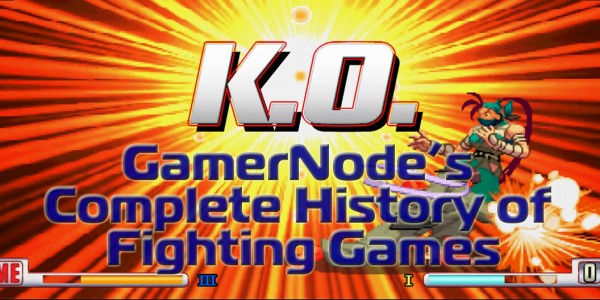
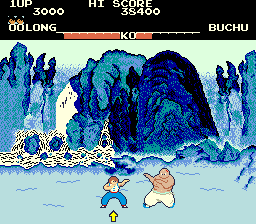
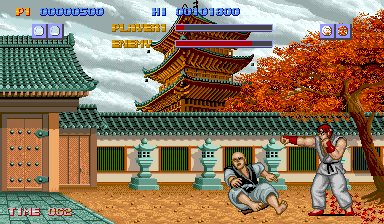
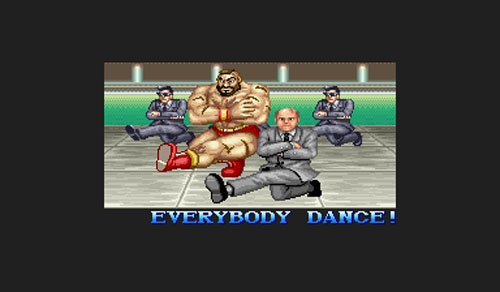
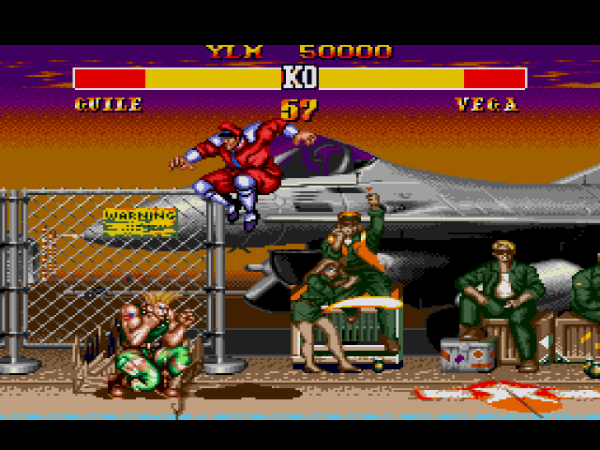
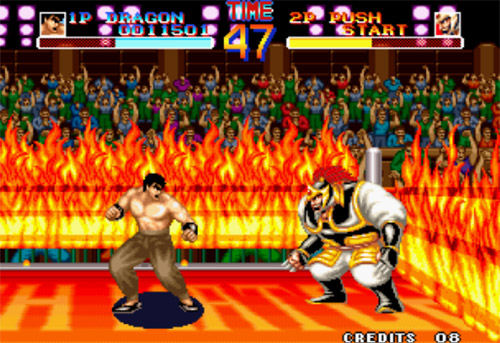
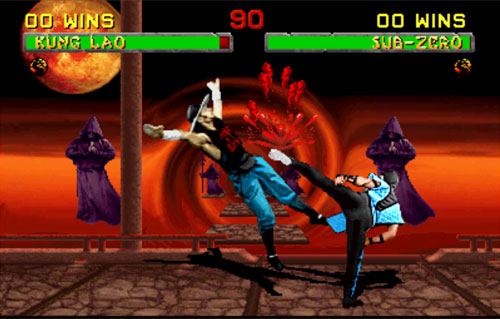
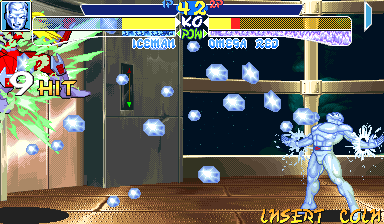
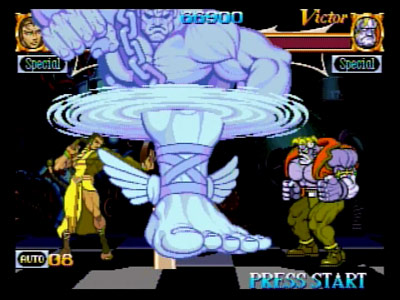
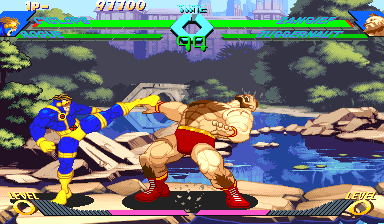
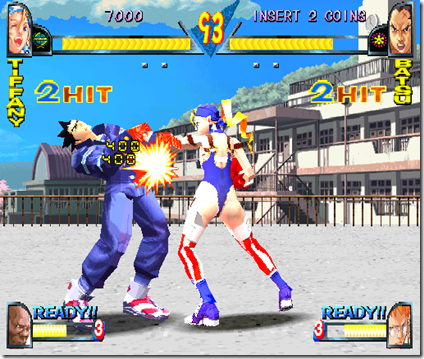
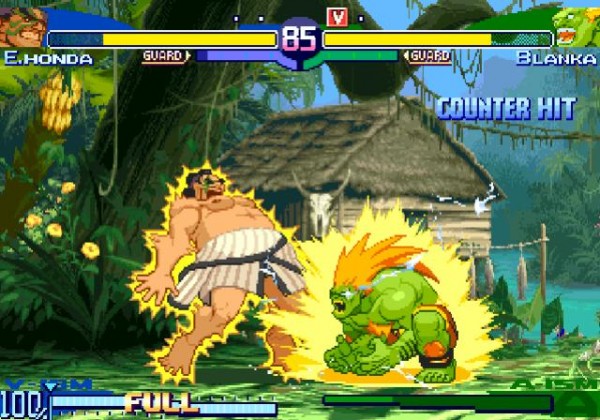
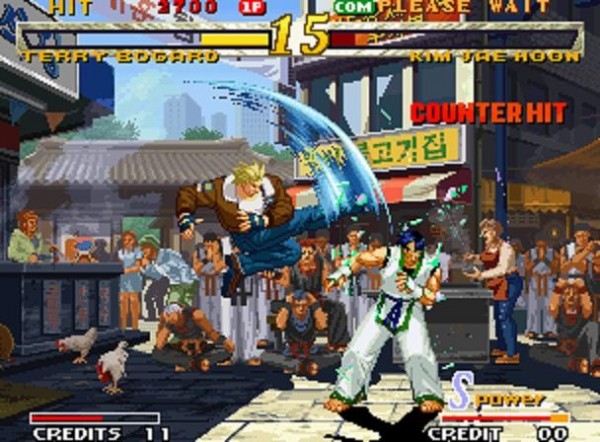
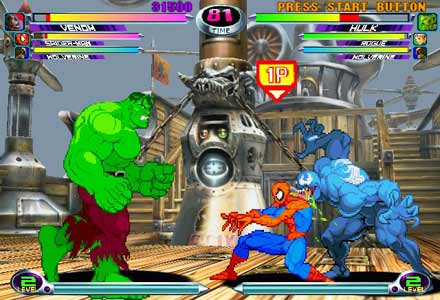
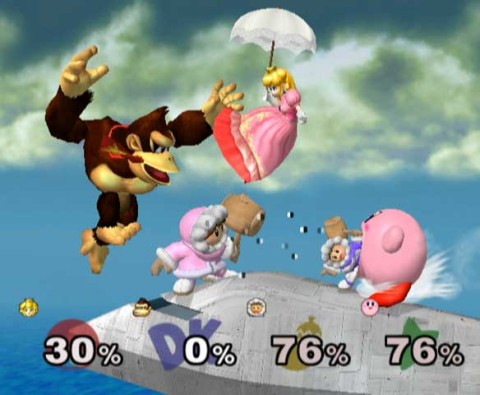
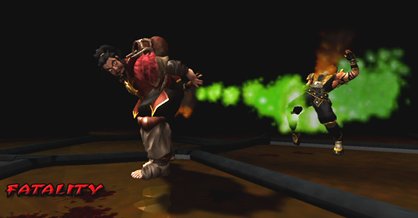
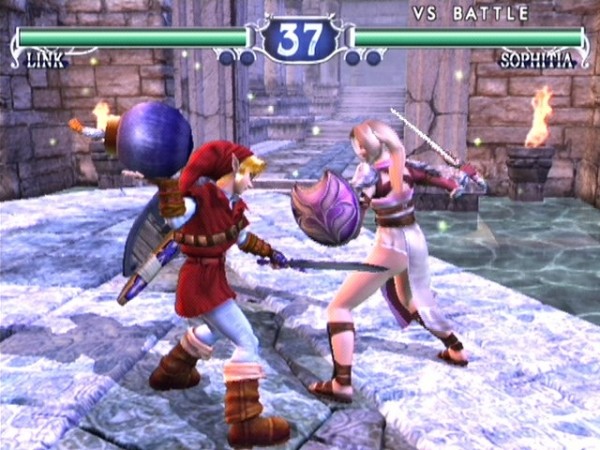
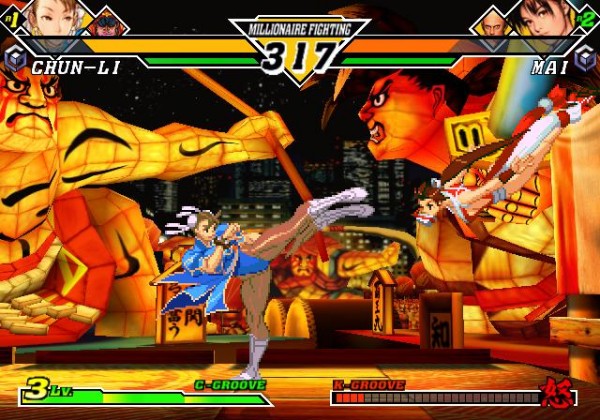
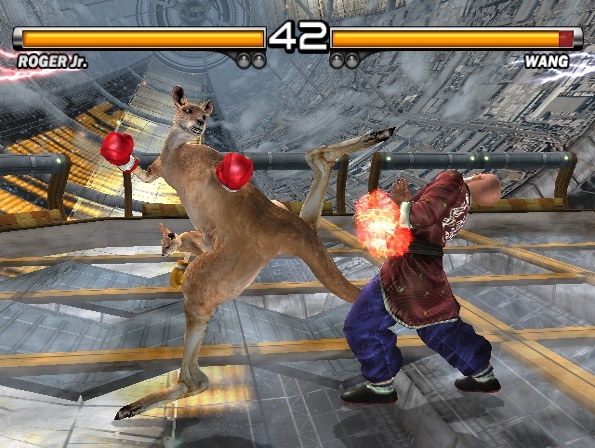
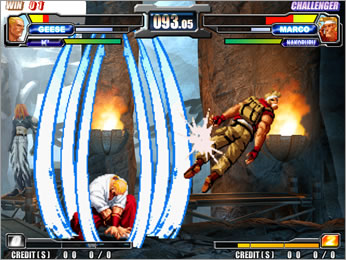
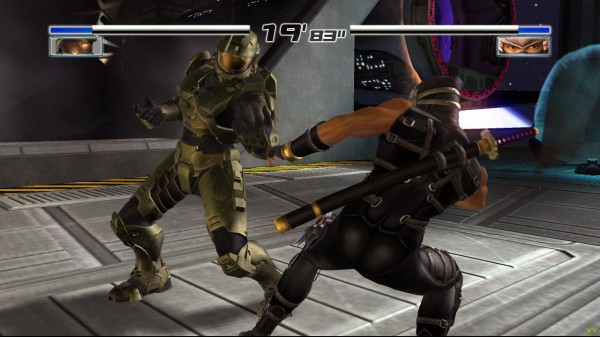
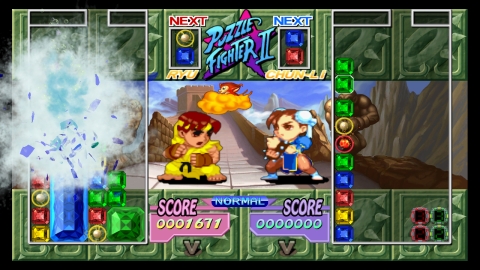
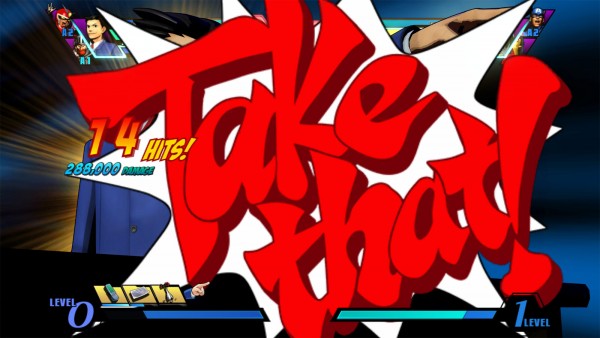
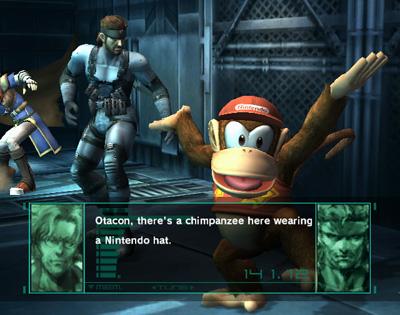
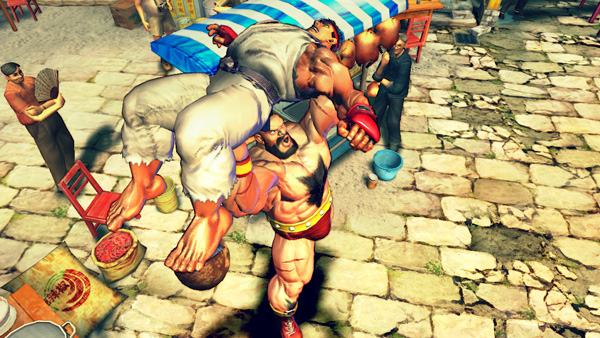
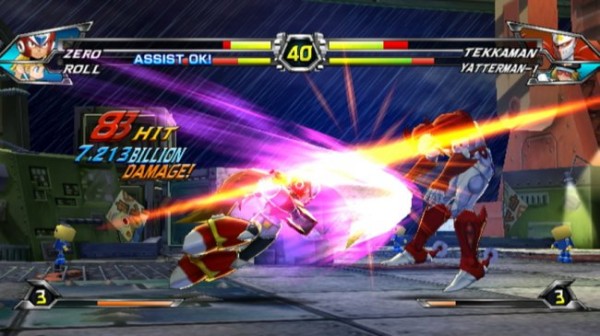
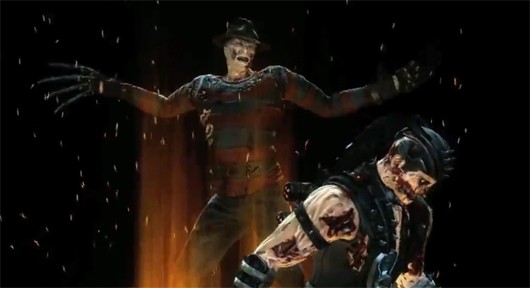
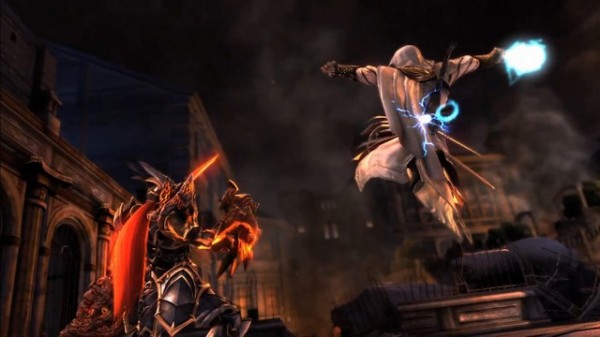














Great article. Just two things. You forgot Guilty Gear XX Slash and Accent Core. Since you had all the other Guilty Gears (save the wonderswan versions and all the ports which don’t really matter), I figured it was just an overlook. Also, was wondering if you would be interested in making a timeline with the names of the games listed, just for a quick easy visual reference.
Either way, thanks for the article and great work.
You forgot Dead or Alive 3, and didn’t mention either Dead or Alive 5 or Virtua Fighter 5 Final Showdown for 2012 despite column time on their prequels.
You forgot Dead or Alive: Ultimate (DOA1 and DOA2 remixes for the Xbox that provided the first lobby system in a fighting game), and Dead or Alive 5 coming out next year.